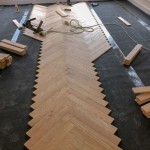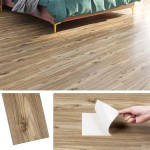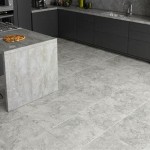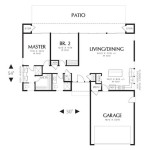Victorian Style Bathroom Floor Tiles: A Comprehensive Guide
Victorian-era design, spanning roughly from 1837 to 1901, continues to exert a considerable influence on contemporary interior aesthetics. This enduring appeal is particularly noticeable in bathroom design, where Victorian principles can be seamlessly incorporated to create spaces of elegance and timeless charm. One of the most impactful elements in achieving this aesthetic is the selection of appropriate floor tiles. Victorian style bathroom floor tiles are characterized by their intricate patterns, geometric designs, and use of classic color palettes. This article delves into the various aspects of Victorian bathroom floor tiles, examining their defining characteristics, common materials, design considerations, and installation practices.
The Victorian era was a period of significant industrial advancement, allowing for the mass production of goods and the wider availability of materials. This technological progress significantly impacted the design and construction industries, leading to the creation of more intricate and affordable building components. The advent of affordable tile manufacturing, in particular, democratized access to decorative flooring, allowing even middle-class homes to incorporate elaborate tile patterns that had previously been the sole preserve of the wealthy. Consequently, the Victorian aesthetic embraced a mix of ornamentation and practicality, resulting in a distinctive style that blended functionality with visual appeal.
Key Characteristics of Victorian Bathroom Floor Tiles
Several key characteristics define Victorian bathroom floor tiles, distinguishing them from other styles. These characteristics relate to pattern, color, material, and layout, all of which contribute to the overall Victorian aesthetic.
Geometric Patterns:
One of the most identifiable hallmarks of Victorian floor tiles is the use of intricate geometric patterns. Common patterns include checkerboard designs, elaborate mosaic arrangements, and tessellated forms. These patterns often incorporate a range of shapes, such as squares, rectangles, hexagons, and octagons, arranged in complex and visually engaging compositions. The complexity of the pattern can vary significantly, from simple checkerboard layouts to highly detailed and ornate designs that require meticulous planning and installation.
Color Palettes:
The color palettes employed in Victorian bathroom floor tiles typically involve a combination of contrasting colors to accentuate the geometric patterns. Black and white is a classic and enduring choice, frequently used in checkerboard or more complex mosaic arrangements. Other common color combinations include earth tones such as browns, creams, and ochre, often paired with accent colors like deep reds, greens, and blues. The use of contrasting colors helps to define the individual shapes and create visual interest, contributing to the overall impact of the floor design.
Material Choices:
While various materials were used in Victorian floor tiles, ceramic and encaustic tiles were the most prevalent. Ceramic tiles, known for their durability and water resistance, were a practical choice for bathrooms. Encaustic tiles, distinguished by their inlaid patterns created with different colored clays, offered a more luxurious and decorative option. The patterns in encaustic tiles are not merely surface decoration; they are integral to the tile itself, ensuring that the design remains intact even with wear and tear. Other materials, such as marble and slate, were also used in higher-end Victorian bathrooms, adding to the overall sense of opulence.
Borders and Accents:
Victorian floor tile designs often incorporate borders and accent tiles to frame the main pattern and add further visual interest. Borders typically feature repeating geometric motifs or floral designs, serving to define the edges of the room and create a sense of enclosure. Accent tiles, often smaller in size and contrasting in color, are strategically placed within the pattern to highlight specific areas or create focal points. These details contribute to the overall sense of ornamentation and attention to detail that is characteristic of Victorian design.Materials Commonly Used in Victorian Style Bathroom Floor Tiles
The selection of appropriate materials is crucial for achieving an authentic Victorian look in a bathroom. The materials not only influence the aesthetics of the space but also impact its durability, maintenance requirements, and overall longevity.
Ceramic Tiles:
Ceramic tiles are a popular choice for Victorian bathroom floors due to their versatility, affordability, and ease of maintenance. They are available in a wide range of colors, sizes, and patterns, making it possible to replicate traditional Victorian designs with modern manufacturing techniques. Ceramic tiles are also highly water-resistant, making them well-suited for the humid environment of a bathroom. Furthermore, they are relatively easy to clean and maintain, requiring only regular sweeping and mopping to keep them looking their best.
Encaustic Tiles:
Encaustic tiles, with their inlaid patterns and rich colors, offer a more historically accurate and visually striking option for Victorian bathroom floors. These tiles are made by pressing different colored clays into a mold, creating a pattern that is integral to the tile itself. This process ensures that the design remains intact even with heavy use and wear. Encaustic tiles are more expensive than ceramic tiles but offer a level of durability and authenticity that is hard to match. They require periodic sealing to protect them from stains and moisture, but with proper care, they can last for many years.
Porcelain Tiles:
Porcelain tiles, a type of ceramic tile that is fired at a higher temperature, offer enhanced durability and water resistance. They are an excellent choice for bathrooms that experience heavy foot traffic or are exposed to excessive moisture. Porcelain tiles are available in a wide range of colors and patterns, including those that mimic the look of natural stone or encaustic tiles. They are also relatively easy to maintain, requiring only regular cleaning with a mild detergent. Porcelain tiles are a versatile and practical option for creating a Victorian-inspired bathroom floor that will stand the test of time.
Natural Stone:
While less common than ceramic or encaustic tiles, natural stone such as marble, slate, and limestone can also be used to create a Victorian-style bathroom floor. These materials offer a sense of luxury and sophistication, adding a touch of elegance to the space. Marble, with its veined patterns and polished surface, is particularly well-suited for creating a classic Victorian look. Slate, with its textured surface and earthy tones, can provide a more rustic and understated aesthetic. Natural stone tiles require regular sealing to protect them from stains and moisture, and they may be more expensive than other options. However, their natural beauty and durability can make them a worthwhile investment.Design Considerations for Victorian Bathroom Floor Tiles
Successfully incorporating Victorian floor tiles into a bathroom design requires careful consideration of various factors, including room size, layout, and the overall aesthetic of the space.
Scale and Proportion:
The size and complexity of the tile pattern should be proportional to the size of the bathroom. In smaller bathrooms, using smaller tiles and simpler patterns can help to avoid overwhelming the space. Larger bathrooms can accommodate more intricate and elaborate patterns without feeling cramped or cluttered. It is important to consider the scale of the pattern in relation to other elements in the room, such as the bathtub, vanity, and toilet, to ensure a cohesive and balanced design.
Color Coordination:
The color palette of the floor tiles should complement the other colors in the bathroom, including the wall paint, fixtures, and accessories. Consider the overall mood and atmosphere that is desired. A light and airy color palette can create a more spacious and inviting feel, while a darker and richer color palette can add a sense of drama and sophistication. The use of contrasting colors in the floor tile pattern can help to define the shapes and create visual interest, but it is important to ensure that the colors work together harmoniously.
Layout and Pattern Placement:
The layout of the floor tiles can significantly impact the overall look and feel of the bathroom. Consider the placement of the pattern in relation to the room's focal points, such as the bathtub or vanity. Aligning the pattern with the room's architecture can create a sense of order and symmetry. Using borders and accent tiles can help to define the edges of the room and create focal points. In irregularly shaped bathrooms, careful planning is required to ensure that the pattern is properly aligned and that the tiles are cut to fit seamlessly around corners and obstacles.
Integration with Other Victorian Elements:
The floor tiles should be integrated seamlessly with other Victorian-era design elements in the bathroom, such as clawfoot bathtubs, pedestal sinks, and vintage-style fixtures. Consider the use of wainscoting, ornate mirrors, and period-appropriate lighting to enhance the Victorian aesthetic. The overall goal is to create a cohesive and harmonious space that evokes the elegance and charm of the Victorian era.The selection and application of Victorian style bathroom floor tiles represent a significant element in recreating the elegance and timeless appeal of the era. By understanding the key characteristics, material options, and design considerations outlined above, individuals can effectively incorporate these tiles into their bathroom designs, creating spaces that are both visually stunning and historically informed.

Monaco Victorian Style Porcelain Wall Floor Tiles 200x200mm Moroccon Bathroom Kitchen

Victorian Style Porcelain Floor Tiles In 11 Styles By Ca Pietra

London Mosaic Victorian Floor Tiles Sheeted Ceramic Tile Design And Supply

Victorian Tiles A Guide To Choosing Patterns Blog Quorn Stone

Nail The Trend Victorian Tiles

Victorian Tiles A Guide To Choosing Patterns Blog Quorn Stone

Victorian Tiles Tile Co

Marquina Black Victorian Tiles Floor Moroccon Bathroom Kitchen

Victorian Tiles For The Modern Home Direct

Tenby Black Grey Dover White Victorian Floor Tiles Original Style







